by Nick Drew | Wed 14 Aug 2019
Powering up with Komatsu
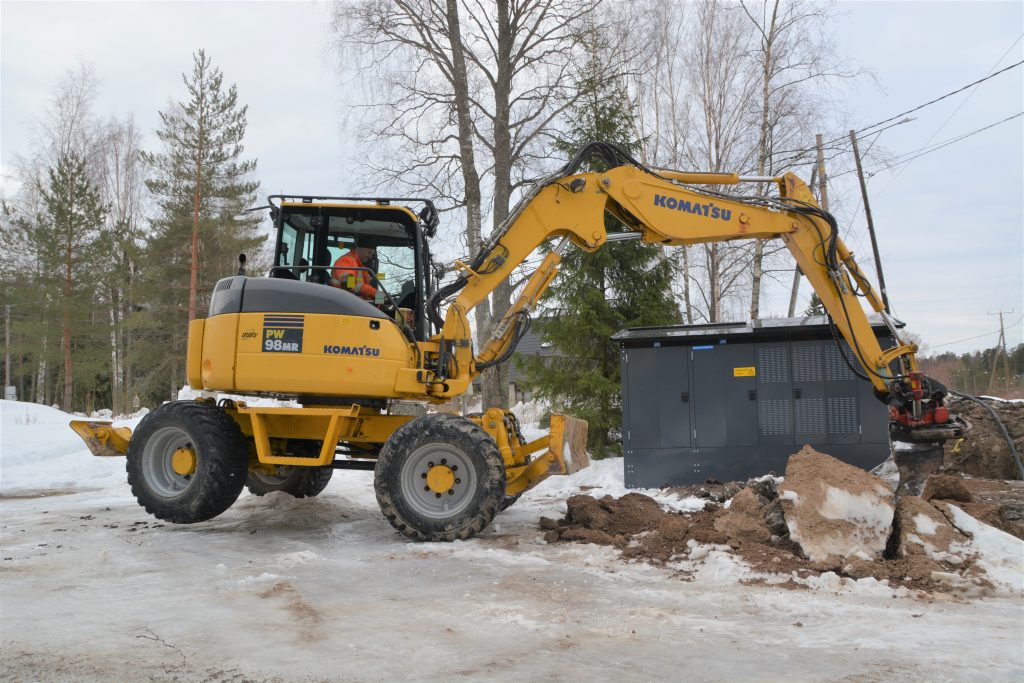
Of course, during the severe winter months these overhead cables, which cover vast distances, are often vulnerable to heavy snow and especially during storms when they can be damaged by falling trees. There is also another big problem the companies have to deal with which is theft, usually perpetrated by gangs coming over the border from Russia to steal the valuable copper cable. These factors have led to an upsurge in work for utility contractors across the country, excavating trenches and laying new cables underground. As you travel around the country you currently see this kind of work going on all over the place and it is estimated that by 2020 around half of the electricity network’s end users electric supply should be weather-proofed thanks to an investment of around 8.6 billion Euros.
One contractor who is heavily involved in this excavation and cabling work is Marko Virtanen Oy, who work as a subcontractor for Finnish national utilities provider Elvera Oy. Marko, who has worked in the utilities sector for many years, works primarily in South East Finland, covering an area within a radius of 100 kilometres from there base in Loviisa.
Marko is a big fan of Komatsu excavators and four of the companies six excavators come from the Japanese manufacturers stable having been supplied from new by the long-term Finnish Komatsu dealer Suomen Rakennuskone Oy. Earthmovers caught up with man and machine in Tesjoki, near Loviisa, where he was operating his Komatsu PW98MR-6 wheeled excavator. The machine was built in Komatsu’s Italian facility, the former FAI factory in Noventa Vicentina and is a 2010 model, featuring a (TAB) two-piece boom, dozer blade and stabilizers, Marko also added an Indexator Rototilt RT30 tiltrotator and reports that both machine and “tilty” have been incredibly reliable throughout their working lives. 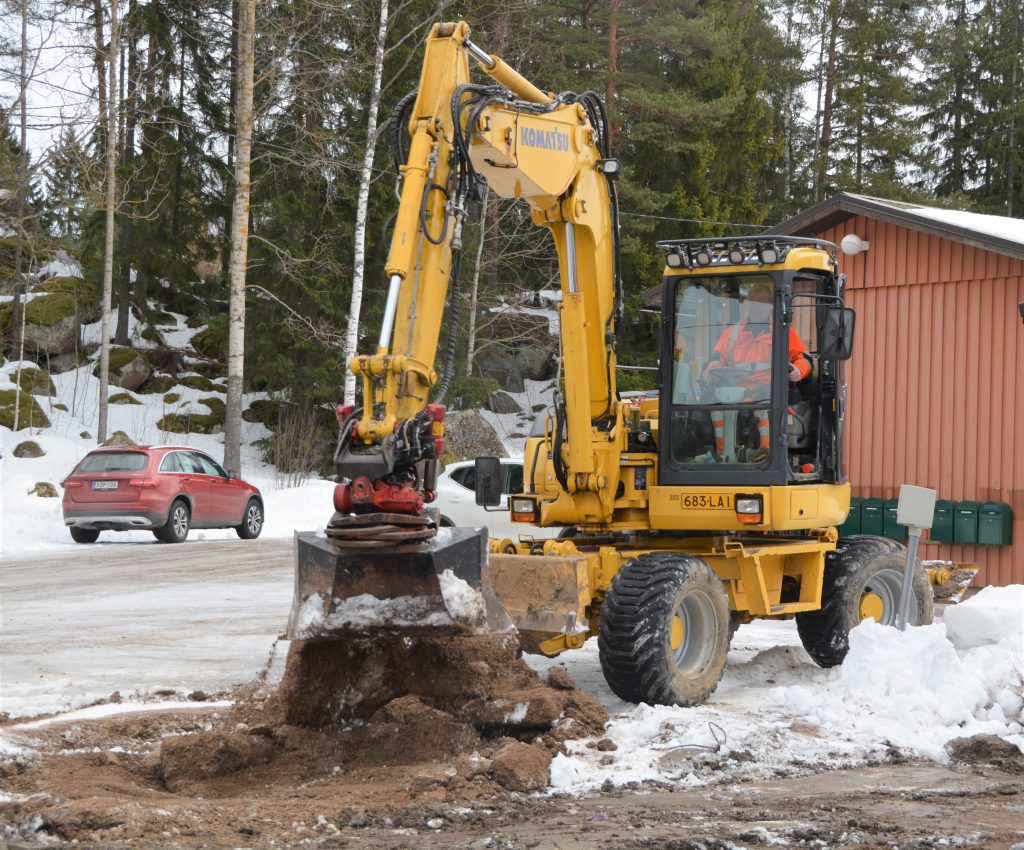
Marko’s other three Komatsu machines are all tracked versions with two of them being the 12-tonne class PC118MR-8 compact radius models fitted with SMP tiltrotators. These machines have proven to be ideal for working in this application, with the offset boom and compact rear end being particularly useful during close quarters work for example alongside the road with live traffic movements. 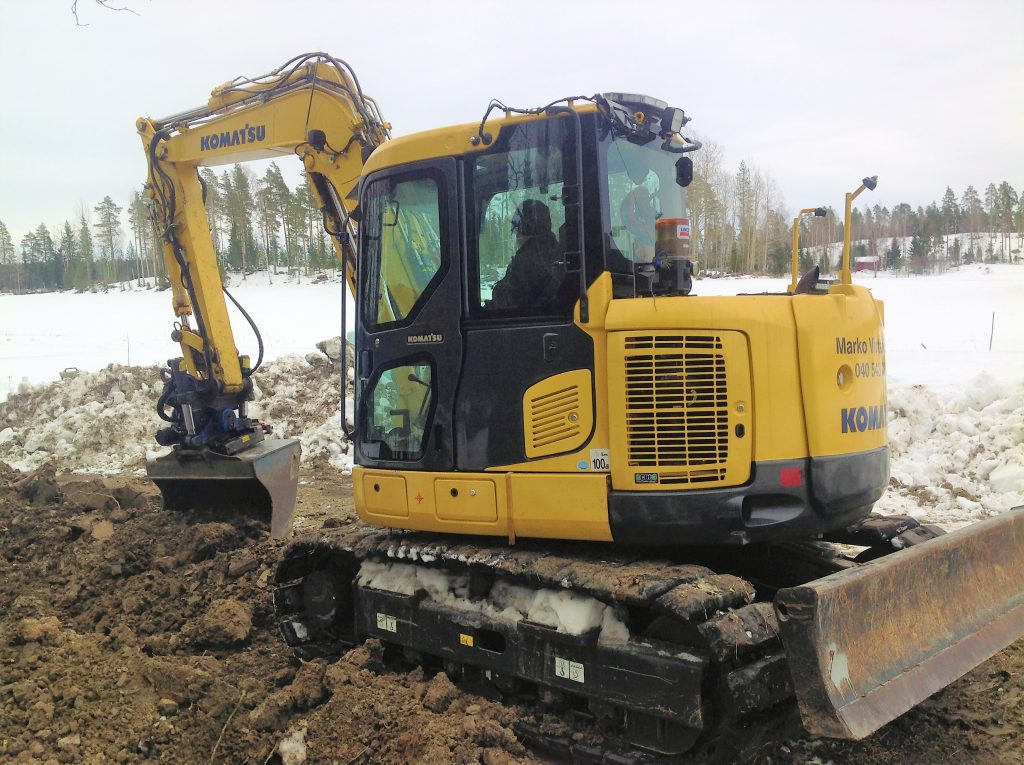
These machines were also specified with rubber track pads to prevent any damage to tarmac and paved areas. In addition, as with all of Marko’s machines, they are fitted with Lincoln auto greasing systems. 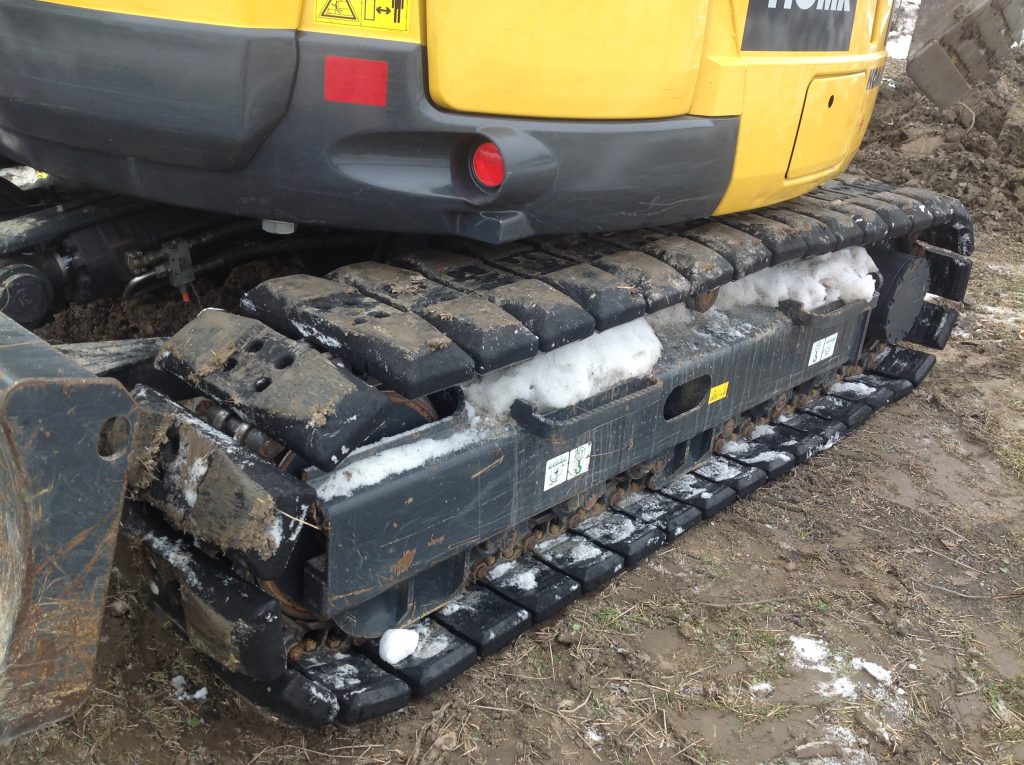
Marko’s smallest Komatsu machine is the 8-tonne class PC78US-8, an ultra-compact machine with a centrally mounted fixed boom set up, which Marko describes as another perfect tool to have in the arsenal for the cable works operations. The tracked machines are great in areas where the going is sometimes a bit soft, but the PW98MR-6 is more versatile for getting around the job site and in the dig for example when excavating along the cycle paths where it will cause a lot less surface damage.
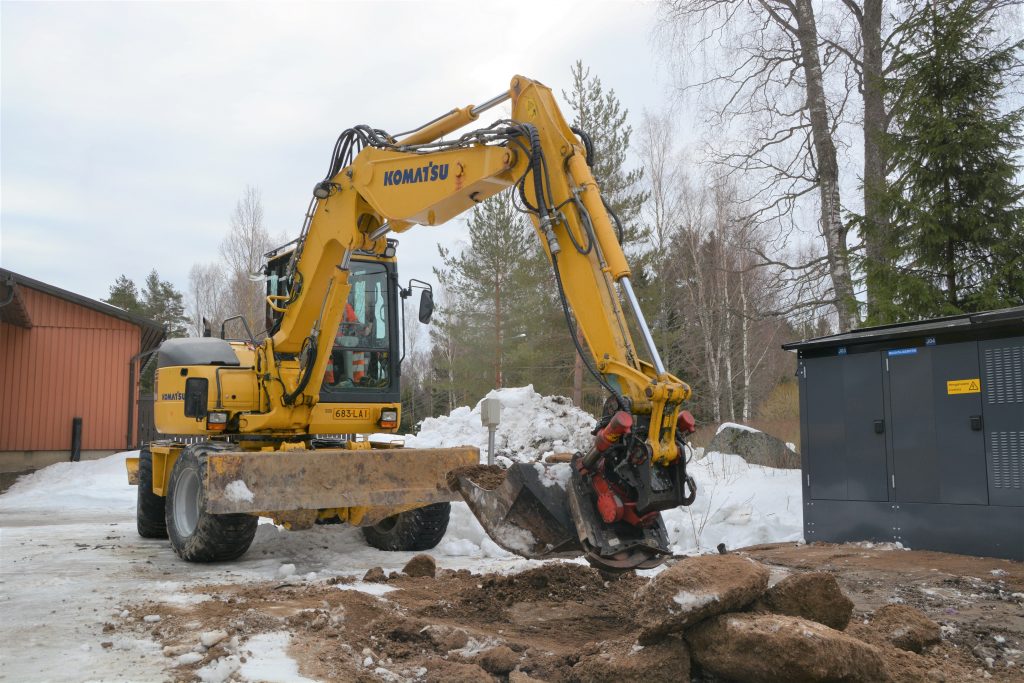
Marko has been a contractor since 2000 and has grown the business steadily up to today which sees him employing around 7 people. Marko himself tends to spend a lot of time operating the PW98MR, which in true Finnish style is kitted out with a full range of Scandinavian style LED working lights. The machine usually sports a full set of mudguards to cut down the spray from the wheels, but Marko said they had been taken off during the worst period of the winter months, as the machine had been fitted with heavy duty snow chains, with the worst of the winter snow behind them for this year, he expected that the mudguards would be going back on over the coming weeks. 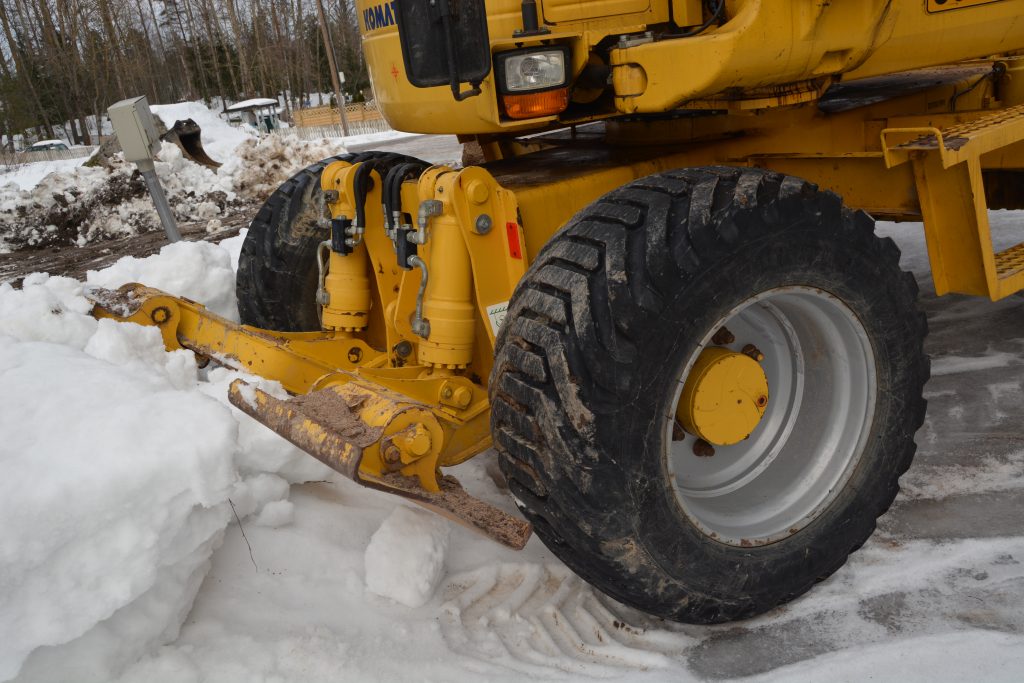
On the day of our visit Mark was tidying up around a new transformer box at the end of this particular contract which had seen him excavate a 12-kilometre stretch of trench, and install the electric cables in the ground. Once connections to the local properties are made the overhead powerlines will be dismantled and carrying poles removed. Talking about the operation Marko said, “This was a long 12 kilometre run of trench, which we then installed an equal amount of high-voltage cable and around eight kilometres of low voltage cable. Usually, several cables are sometimes installed in the same trench, with telecoms cables often installed at the same time too, but there is still a lot to be developed in terms of co-operation in this respect” a familiar scenario to here in the UK I commented.
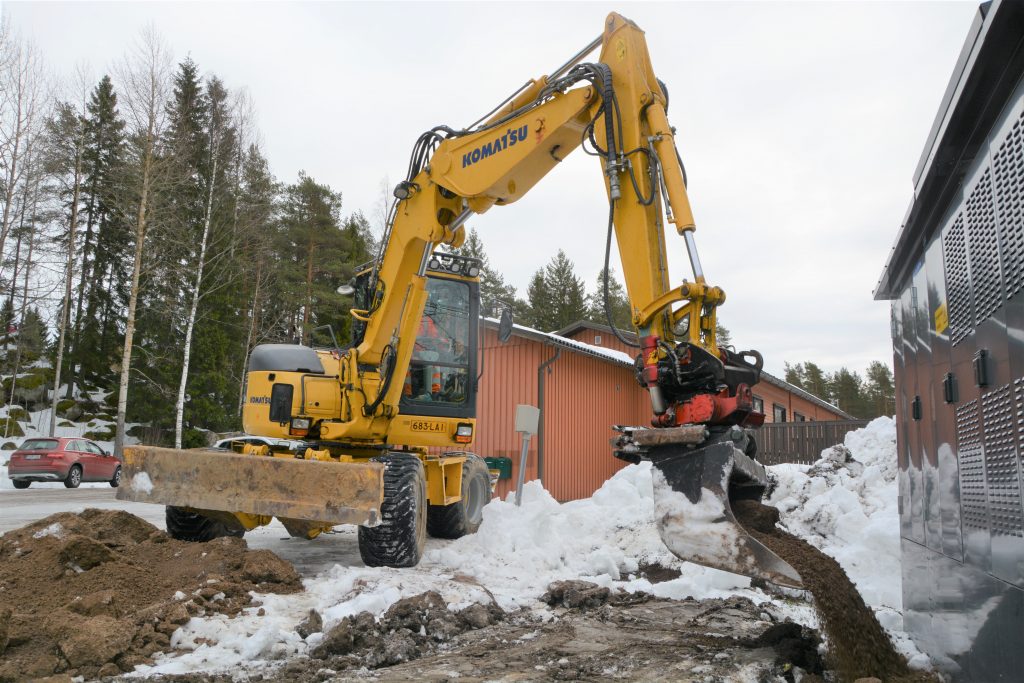
Talking further about the companies work Marko said, “Last summer, all our machines were working for Elvera in the excavation and cable laying work. We like to multi-task and often do several things at the same time. The gang usually has a digging excavator and a backfilling excavator with their operators and another mate on the ground. So, three men per gang are needed to keep things moving smoothly. One more machine can be added to the fast-moving projects, allowing the digging machine to keep excavating all the time. The following machines are engaged in pre-filling the trench with sand, cable installation and final finishing of the excavation area”. All cable excavation and laying work is closely monitored to ensure it meets with all local regulations in terms of depth, coverings and warning tapes. 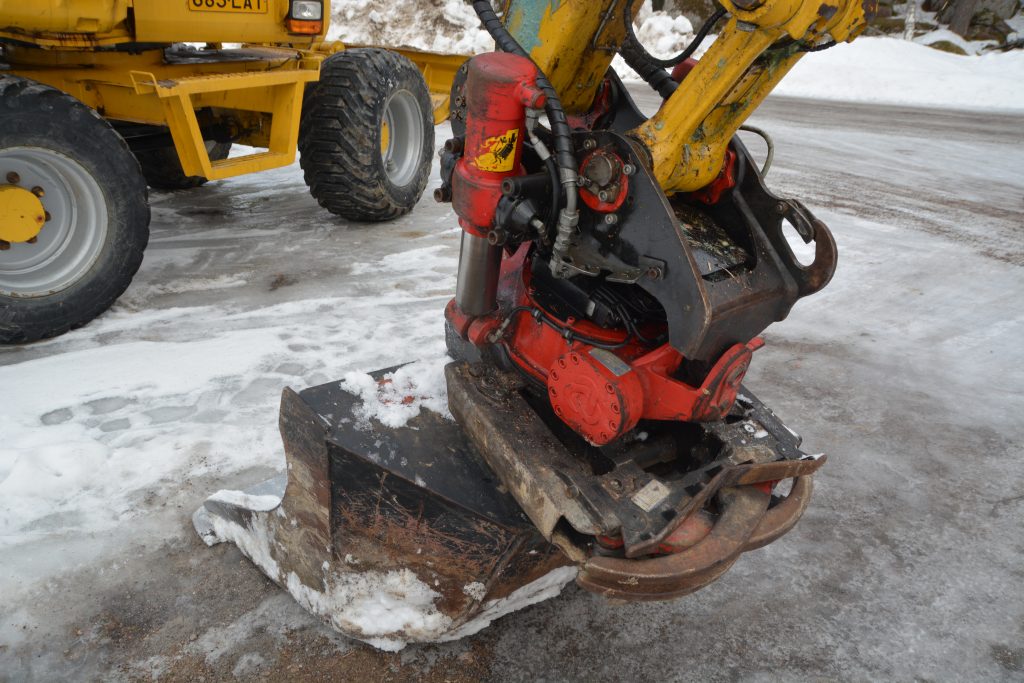
“A lot of our excavations are also being pulled across the fields and a good many landowners have denied installations due to fears that they may encounter problems when they plough the land at a later date. To avoid any such drama’s, we bury the cables in the fields to a depth of one metre, even though the maximum depth required by law is only 700 millimetres” says Virtanen. Much like in the UK there is a fixed price in terms of meterage, Marko said, “This is the only good arrangement for both client and contractor in the long term, if you are lazy then you get no money, it’s as simple as that” he joked! Last year as an example, Marko and his team achieved some 45 kilometres of main line trenching, add onto the that the extra meterage of cable for joining at junction boxes and it amounts to some 50-60 kilometres of actual cabling work. 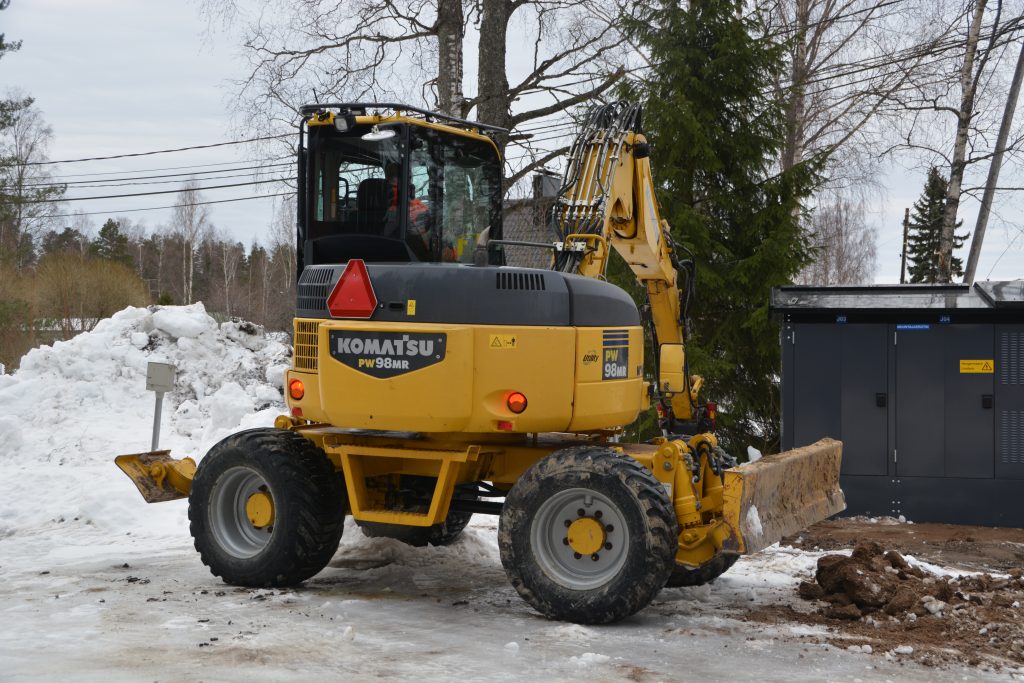
Marko is clearly a big fan of the wheeled PW98MR-6 and it’s not hard to see why, in so many ways it’s the perfect machine for this job, being highly mobile and versatile. The machine has four-wheel steering enabling tight turns and in addition the machine features joystick steering, meaning Marko never has to take his hands off the controls which in turn speeds up the whole operation further. Marko has an excellent and long-standing working relationship with his Komatsu dealer Suomen Rakennuskone Oy’s Regional Area Sales Manager Arto Arola who said, “This machine is almost the perfect fit for Marko, it has great features that benefit the kind of work he does, like the joystick steering, folding boom and automatic brake”.
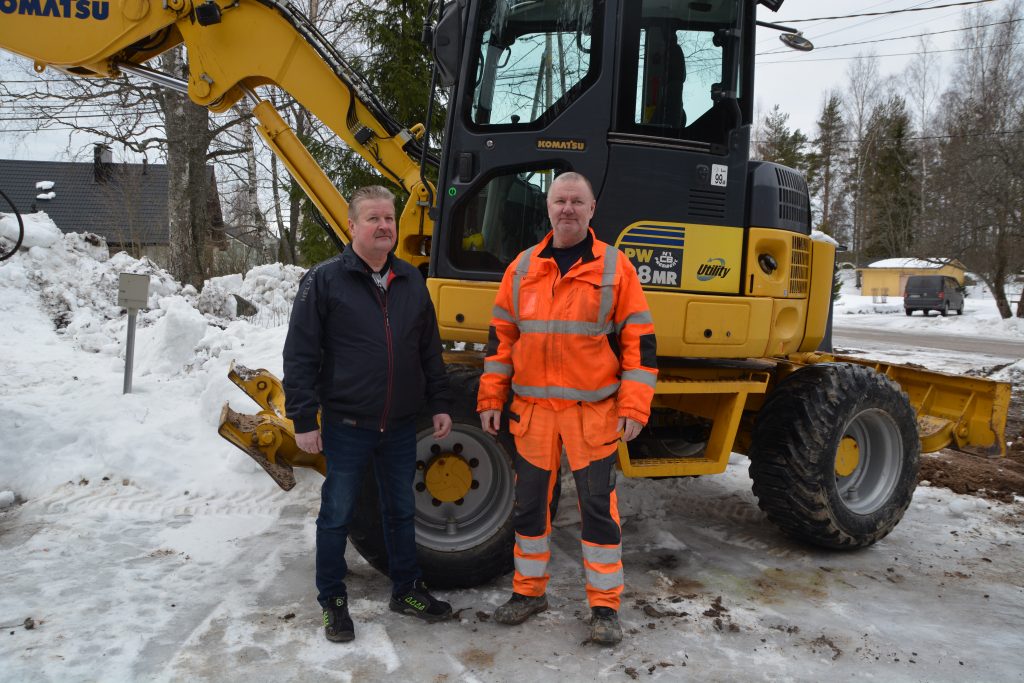
Pictured above: Left to Right; Suomen Rakennuskone Oy’s Regional Area Sales Manager Arto Arola and Marko Vertanen.
Marko also runs a 22-tonne tracked excavator from a competitive brand, Marko said, “Our largest excavator is a 22 tonner, it is used out in the fields even on the cabling works, but it is also used for other jobs we undertake. So far, we have managed to avoid using urea (AdBlue) on our machines, but in the future I’m sure this will be inevitable unfortunately”.
Summarizing about his machine choice and the relationship with Komatsu in Finland Marko said, “I have been working with Arto for my machinery choices for a long time and I know that the product alone will not always solve the problems. At the moment there are a lot of good machines to choose from in the market place, but what really matters is how you are dealt with during the purchase and the back-up you receive from the dealer afterwards, that is what is really important”. With only half the countries electrical network being put to ground by 2020 Marko Virtanen and his team certainly look set to have a long run of this work ahead of them and no doubt more machines from the Komatsu stable will be joining the firm in the coming years.
Thanks must go to Olli Paivio and Koneporssi for assistance in arranging this site visit.